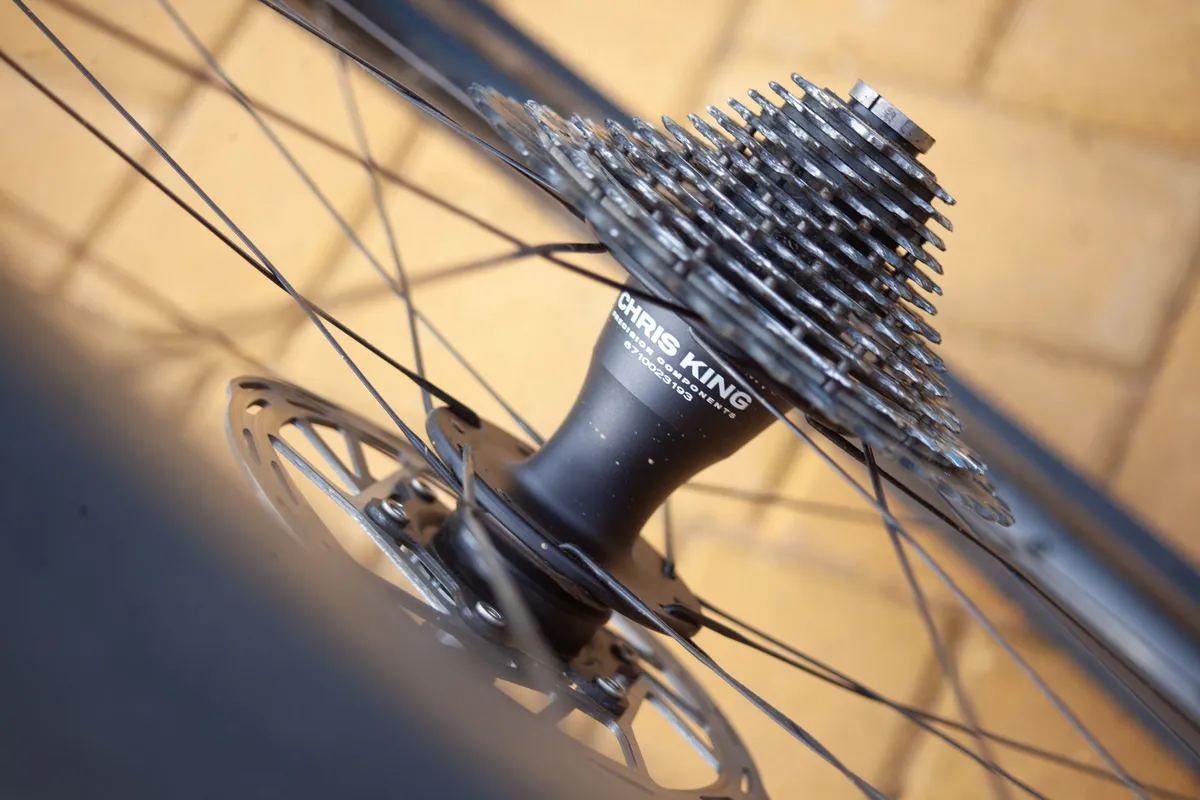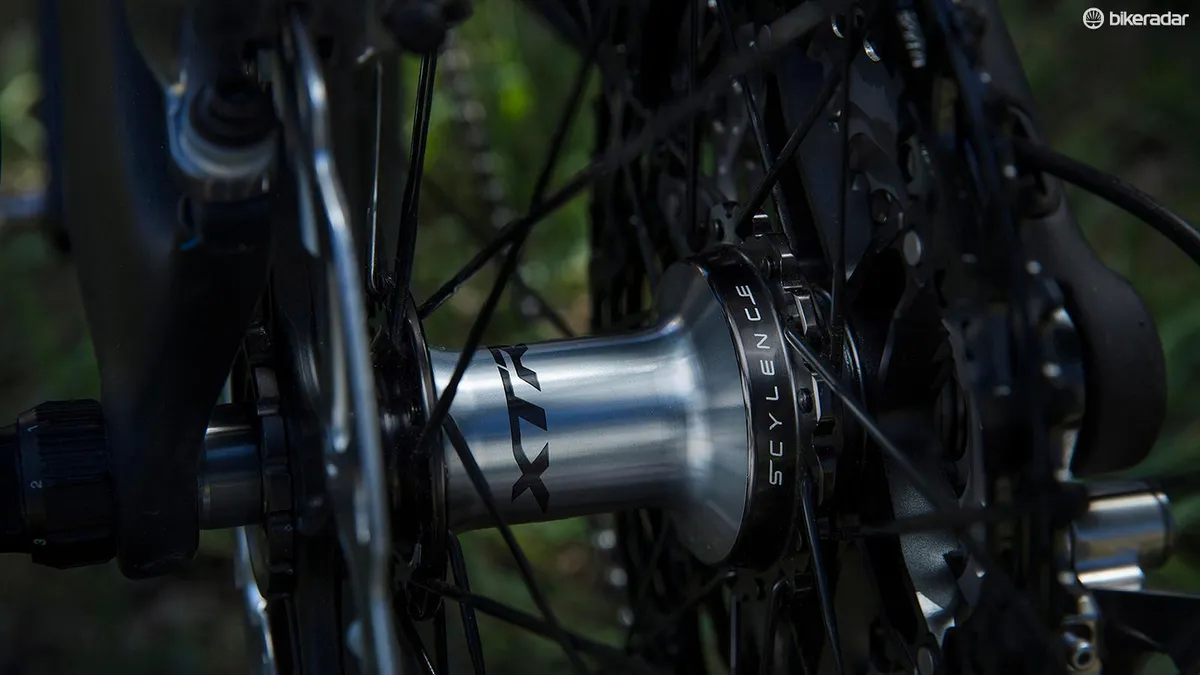The bike industry’s obsession with making freehubs ever louder is modern cycling tech’s most unfortunate trend, and I’m done with it.
As tiresomely dominant a part of my personality as it is, I’m not going to bore you with a misty-eyed paean to the blissful silence of a fixed-gear bike's drivetrain. My complaints are far more straightforward: loud freehubs are, at best, annoying, and at worst, downright rude.
I’ll admit I’ve helped spread the gospel of noisy hubs. At the 2024 Sea Otter Classic, I published a video ranking the best-sounding freehubs at the show. Unsurprisingly, the loudest hubs got the biggest nods of approval from my big square heid. Looking back, I see the puerile errors of my ways.

This realisation hit me hard when I borrowed an ENVE Melee recently. This a fantastically delightful bike – a Bike of the Year-winning bike, no less – equipped with de rigueur deep carbon rims laced to ENVE’s own-brand hubs.
As I age gracefully into my time at BikeRadar, I’ve spent more time riding my personal bikes than new test bikes, so this was the first time in a while I’d ridden a modern carbon road bike with a truly loud freehub.
As wonderful a bike as the Melee is, I was stunned by the fizzing howl of its freehub, reverberating around the wheel with a remarkable drone. Coasting at speed, the noise is so intrusive that any conversation on a descent turns into a shouting match – gentle chatter with a riding partner when descending is impossible.
I’m picking on ENVE unfairly as a result of this recent experience – it is by no means alone in this regard.
‘Unnecessary conflict’

I am also acutely aware that this is a divisive opinion – a lot of you love loud freehubs – but I am unmoved.
Some will trot out the old line that ‘loud hubs save lives’, with the well-timed chirp of a freehub warning trail or path users of your approach.
I am just as guilty – guilty being the key word here – as the next cyclist for holding off the pedals momentarily when riding without a bike bell.
However, I’m convinced that the loud freehubs are a source of unnecessary conflict on shared-use paths.
I am more often met with a startled response to a freehub buzz than I ever am to a bell, and it’s not a surprise – why should the general public expect a bike to make that frightful racket?
In fact, when I worked in a bike shop, a customer tried to return their bike hours after purchasing it, convinced that there was something wrong with it when coasting.
They couldn't quite grasp why, by design, a bike would have a seemingly unnecessarily loud wheel. That’s likely reflective of most of the general public.

And what of our equine friends? Horses might make good companions, but they aren’t blessed with the calmest dispositions.
Is it far-fetched to suggest your clamorous hub awakens a genetically coded fear of angry snakes on a grassy plain? That’s certainly been my experience when faced with the glint of two hooves raised in fear of my approaching bike.

If we put aside the ASBO-worthy public nuisance, others claim the distinctive buzz of a hub is a mark of quality to be celebrated.
Chris King, for instance, has leaned heavily into marketing its trademark angry bee as a feature, not a flaw.
I’ll admit that I once bought into this. A loud freehub marked you out as a ‘serious’ rider, while the muted whirr of a budget hub was to be avoided.
I won’t for a second question the quality and performance of Chris King or other loud hubs – they are amazing, jewel-like examples of engineering.
But as I get older – or perhaps more curmudgeonly – I simply cannot abide the distraction of a thrumming hub.
Where I might have once tolerated a loud hub laced to a shallow-section alloy rim, deep-section carbon wheels have exacerbated the issue, with their cavernous profile amplifying the sound.
There is a better way

Ears undamaged by their superior wares, some brands are clearly listening to good reason, offering truly silent hubs.
Shimano’s Sylence hub technology was a notable advance in the pursuit of mindful hub enlightenment. Sadly, the tech was shelved before release, supposedly because Shmano couldn’t get the system to work reliably. However, elements of it carried over to the current generation of Shimano hubs, which are notably quiet.

Onyx’s freehubs use a roller-clutch mechanism that delivers both near-instant engagement and genuinely silent coasting. By all accounts, they’re brilliant – but frighteningly expensive, which keeps them niche.
At the more attainable end of the spectrum, DT Swiss hubs strike an acceptable balance. Its freehub tech – which is licensed by many brands – has an audible whirr when coasting, but it’s more of a soft purr than a metallic scream. Fulcrum’s hubs are also pleasantly quiet.

Even ENVE, which I’ve unfairly picked on, explains that its hubs can be made quieter – although there is a trade-off.
“Our Innerdrive system uses two oversized ratchets, which enable the rider to choose a ratchet with a tooth count as low as 40, and up to 100”, explains Jake Pantone – ENVE’s VP of product and brand.
He explains that the lower-tooth-count ratchets are quieter, adding that “by playing with the weight/stiffness of the spring, we can also reduce the noise. A lighter spring makes less noise and also reduces drag. Win, win… less noise, less drag.”
This, he explains, is the setup favoured by Tadej Pogačar and UAE Team Emirates – so in addition to generation-defining talents, Pog and I share a taste for quiet hubs.
However, “the tradeoff is maintenance – you must keep the system clean in order to ensure reliability, whereas the heavier spring can put up with a lot more contamination”, adds Pantone.
“That said, we use good seals that keep maintenance to a minimum. Lubricating the ratchets with an approved lubricant can also further dampen the noise.”
These examples show it’s possible to make a quiet freehub, so why aren’t more brands doing it?
Pantone explains: “Cycling performance is achieved through marginal gains. For hubs, this means creating the most reliable, lightweight hub we can.”
In ENVE’s case, Pantone says that “we have identified, through testing, that ratchet-driven [freehubs] achieve the best reliability at the lowest weight.”

Fair enough, then – performance is a key buying factor for most riders. But so are aesthetics, which you could reasonably group freehub noise within.
As with expensive bikes, the simple fact is that brands wouldn’t make loud freehubs if people weren’t buying them.
The monstrous views generated by freehub check videos on YouTube – BikeRadar included! – are testimony to the fact that loud freehubs have a curious draw.
I’m sure there’s similar psychology at play here to those who like loud exhausts and blowing phat vape clouds in public.
I am not in the habit of yucking someone else’s yum, but in this instance… you’re all wrong and I’m right. Stop ruining my group rides with your daft hubs. How else will you hear my anecdote about how the pylons to the M48 Severn Bridge have the longest span in the UK as we freewheel towards Chepstow?
Why does it even matter?

There’s more to this than an old man shouting at clouds, pushing back at the tireless tide of tech change.
Cycling should be a pursuit of escape – complete focus on the pleasure of effort, or the delight of mindfully gliding through a landscape. A hub that drowns out this experience with a racket sours the experience.
It’s time to put an end to the arms race of loud hubs. Manufacturers, please: turn the volume down – I promise I’ll write a story about your lovely new quiet hubs.
And to my fellow riders: stop coasting and buy a damn bell… or buy a fixie.




